


Copyright 2008
Mingmei Yip
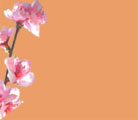


Chinese Courtesans/Geisha
In almost all cultures, some women had to “sell their smile” – actually their entire
body. In China, yueji, music performers or music prostitutes, existed as early as
2500 years ago during the time of Confucius (Warring States, 475-
In the Ming dynasty (1368-
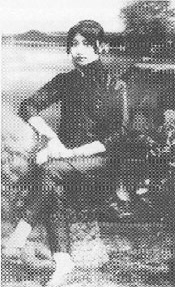
Prestigious Prostitute Dong Zhujun,
early Republic
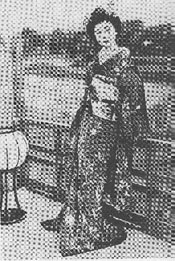
A Japanese Geisha
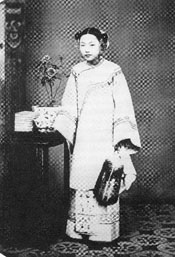
A Chinese Geisha
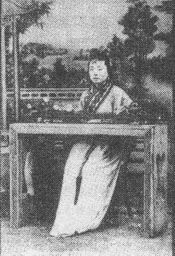
A courtesan playing the qin,
early Republic
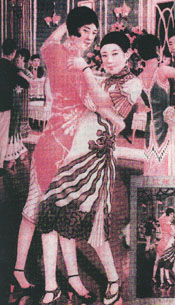
Two courtesans dancing in a superclub
Most of these women were born into privilege yet lost it through ill fortune – death of parents, criminal conviction of a family member, bankruptcy or abduction. A ruined family might be faced with the stark choice between selling a daugher or starvation. Like the rest of the premodern world, China had no social safety net. For most of these fallen women, there was little hope. Yet a determined and resourceful few manipulated the system to attain positions of power and respect. Most prestigious among them was Cai Jinhua, Golden Flower, who rose from a prostitution house to marry an ambassador and later became the mistress of the most powerful European general stationed in China. She used her influence to stop pillage by European soldiers and even, it is said, saved the life of the Empress.
Unlike in our own time, prostitution in China was not just about sex. Not a furtive encounter in a hotel room arranged from a payphone but a leisurely orchestrated mutual seduction in which the attraction was not a bulging chest but elegant conversation and artistic accomplishment. Actual sex might follow a lengthy and extremely expensive courtship by the customer involving gifts of jewelry, lavish banquets, gambling parties and other events put on by the prostitution house. During this, the mingji who had captured the customer’s fancy teased his lust into frenzy not only by flirtatious expressions and body language but also by artistic accomplishments such as composing poems, playing on the pipa or qin, and demonstrating calligraphy.
The Japanese Geisha and the Chinese Courtesan
Many know about the Japanese geisha but this tradition, and even its name, came from China. While the geisha tradition continues in Japan, the remarkable Chinese courtesan culture has passed into history. Despite the claims of Mao Zedong to have eliminated prostitution, only the culture was eliminated. Today in China what are left are jinu, prostitutes who sell only their bodies, perhaps not even a smile.
The Courtesan’s Arts
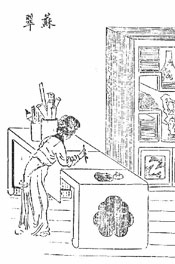
Woodblock print of a courtesan
getting ready to paint
Courtesans were trained in the four major refined arts – music, painting, calligraphy,
poetry – the same pursued by scholar gentlemen and high-
In music, they played the zheng (sixteen stringed zither), the pipa (four stringed lute) the qin (seven stringed zither), and sang operatic arias as well as tunes from narrative music. Some prostitutes also specialized in magic and gymnastics. In the Han dynasty (206 B.C.E. –A.D. 220), a few became famous for walking a tight rope and performing acrobatics such as somersaulting or hanging upside down. Not only was there no net, sharp swords were pointed toward them, ensuring their death should they fall.

A Turquoise Pavilion (Prostitution House)
named Welcoming Spring in
Harbin, China, early Republic
For all prostitutes, however accomplished in the arts, flirting was the most basic and necessary training. They were required to walk in small, elegant steps called “shredded golden lotus steps;” to flick their eyes dreamily or stare deeply into the customer’s; to flash flirtatious smiles – revealing or hiding their teeth. Thrusting the body forward to lure customers was referred to euphemistically as “offering your body to preach the Dharma (Buddhist law).” Mirrors were provided for practicing hair and makeup as well as mastering facial expressions: delighted, surprised, loving, tender, shy, even pitiable, or forlorn. However, all these skills ultimately led to an enchanted customer eager for the bedchamber.


